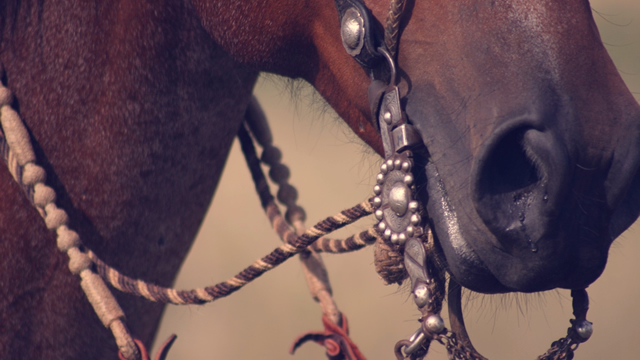Written by Martin Black
Why do we change from one bit to another on our horses? This can tell us something about our horsemanship and ourselves. Sounds like one of those dreaded self-evaluations? — “It’s not me, it’s them!”
If you want to improve your horsemanship, look at what you are doing, let your horse evaluate you. He has nothing to prove, and he doesn’t have an ego.
If we have a problem and we are changing bits to fix a problem, did you consider how to prevent from making the same mistake next time? Or is it something you accept as “just something some horses do?” A horse does not just get heavy in the face or fight the bit because he wants to go against pressure and get into trouble. He can’t make sense of what we are doing so he becomes heavy and tolerant of the pressure or he becomes confused and frustrated. Then he learns to avoid the pressure from the bit by flipping his head or trying to pull the reins out of our hands to try and get some relief from the constant pressure of someone holding onto them. When this is the case, changing to a new bit might help for a day or two, but if you do not change your presentation with your hands, you will end up right back in the same place.
On the other hand, things can be going along reasonably well and we can change bits to give him a more refined signal where he can feel more and our hands can do less. This is received completely different. The horse accepts and responds positively. The other way the horse may respond but the acceptance isn’t there, or he may be intimidated.
Some bits are designed to offer more feel and some are designed to inflict more pain. The reason being, the tongue of the horse has plenty of feel but yet is much more tolerant to pressures than the bars of the horse’s mouth. The tongue itself is a muscle and the tissue that the tongue is made up of is tougher than the sensitive bar tissue. When the tongue is soft it has some give to it, so if he accepts the pressure of the bit, the tongue and the poll stay soft and he gives or responds to the bit. If he doesn’t respond softly, the tongue muscle flexes along with the poll and he braces against the bit and is able to protect the more sensitive areas of his mouth.
Bits that don’t operate on the tongue and put pressure on the bars of the horse’s mouth, such as “tongue relief” bits, are designed to inflict pain. The bars are very sensitive; they don’t have any give like the lip or tongue; therefore, it doesn’t take very much pressure from these bits to cause damage such as bruising, swelling, or tearing the tissue. The obvious signs of this are when the horse’s head elevates and/or the nose goes out. If we are using devices to control the horse’s head position, we have already by-passed the feel stage and are operating off of pressure by using more leverage, more pain, or we have his head tied down to inhibit the horse’s negative responses. We are addressing the symptoms and not the problem. The problem is we are too aggressive, too quick or too strong with our hands, and the horse doesn’t understand or doesn’t have time to respond. The symptoms of this are for him to fight or go against pressure. If the horse can’t get away from pressure, he will go against it.
The pallet is also softer tissue with little give, is very sensitive and can contribute a lot of feel and response to a bit. But, if there is so much pressure that we go beyond his feeling it and it becomes painful, he will open his mouth to get away from the pain. Here again there are devices to treat the symptom of this scenario and prevent his mouth from opening and the problem goes on unaddressed. The bits don’t generally cause the problems we see with head position or mouth opening; it’s the pressure we put on the reins that is the problem. We need to address our timing and the amount of pressure we apply with our hands.
The unfortunate thing is so many bits designed today are to inflict pain and intimidate the horse to respond. Bit makers are looking for a “new and improved” model to market and are willing to compensate a “Professional Horseman” to endorse it. Most of the time it is a “Professional Competitor” that is endorsing the new invention and you don’t see all the horses that don’t survive their program. Only the successful ones are acknowledged, so the new bit must work.
There are plenty of old designs from Europe and the old Spanish Bits modified in old California that were used for hundreds of years by arguably some of the best horsemen the World has ever seen. Their horsemanship was studied for military purposes and for work. Their survival depended on their success with their horses. I believe there is plenty to learn by understanding the way to use some of the old designs and not turn to the quick fixes. We need to take more responsibility for why it is not working instead of grabbing a bigger hammer to fix it.


